Blog
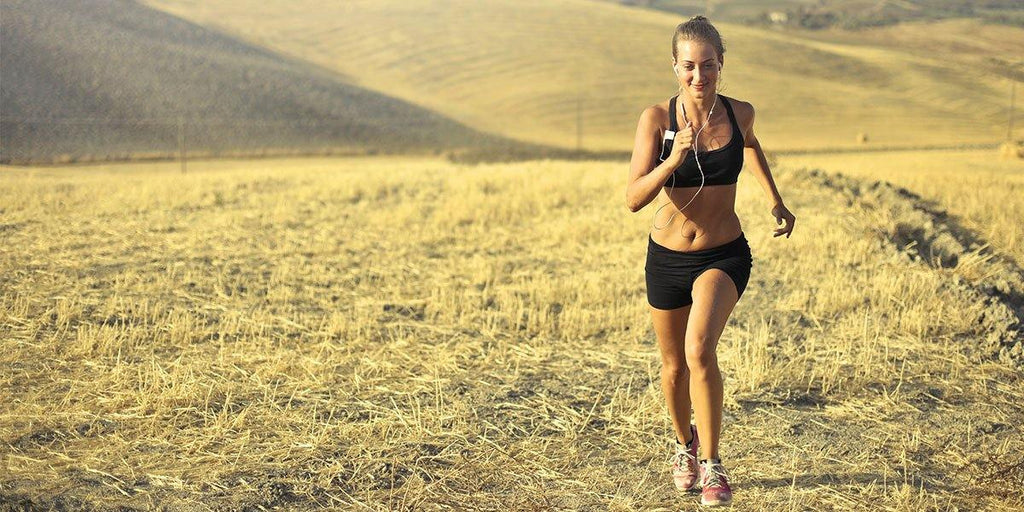
Reasons You Should Stop Trying to Be Perfect
As runners, many of us are Type-A personalities who strive for perfection in every area of our lives. Whether we seek to perform our best, eat as “clean” as possible, do all the “little things,” or never miss a day of our prescribed training plan, we sometimes take our perfectionism a step too far. Instead of focusing on unattainable flawlessness, runners (and all other perfection seekers) should aim to be better than before, but never perfect, as discussed below.
Decreased Mental and Emotional Stress
Often we build up certain ideals in our heads, such as “clean eating,” certain training plans, or weekly goals), and we turn these arbitrary objectives into end-all, be-all scenarios. One slip-up can cause emotional stress when we feel like failures for having chosen to enjoy a piece of cake on a friend’s birthday or because we were too tired to hold that final plank pose. Instead of continually searching for an “A+” in your health regime, concede to yourself that perfection is unattainable. As an alternative, strive to be better than you were before, whether that is eating one fewer serving of sugar than yesterday (as opposed to attempting to cut out sugar cold turkey), or performing one more core routine this month than previously.
Reduced Injury Risk
Runners often avoid listening to their bodies in order to follow their set training plans. However, when you decide not to be “perfect” and to instead allow your body to dictate when to take days off or when to cut a workout short, your risk of injury is drastically reduced. At the end of the day, no one wins an award for showing up to the starting having completed all of the assigned workouts at the sake of his or her health.
Greater Happiness
When you give up the pursuit of perfection, you give up the unhappiness that comes with such an unattainable goal. Runners who seek perfection in their lives often associate their daily satisfaction with how well they were able to control factors that are typically difficult to control, or uncontrollable altogether. For instance, small deviations, such as having to take a day off from training due to excruciating shin pain, can lead to a ruined day because of the mental anguish associated with purposely avoiding exercise. By rationalizing that it’s better to be healthy than perfect, this self-imposed unhappiness disappears.
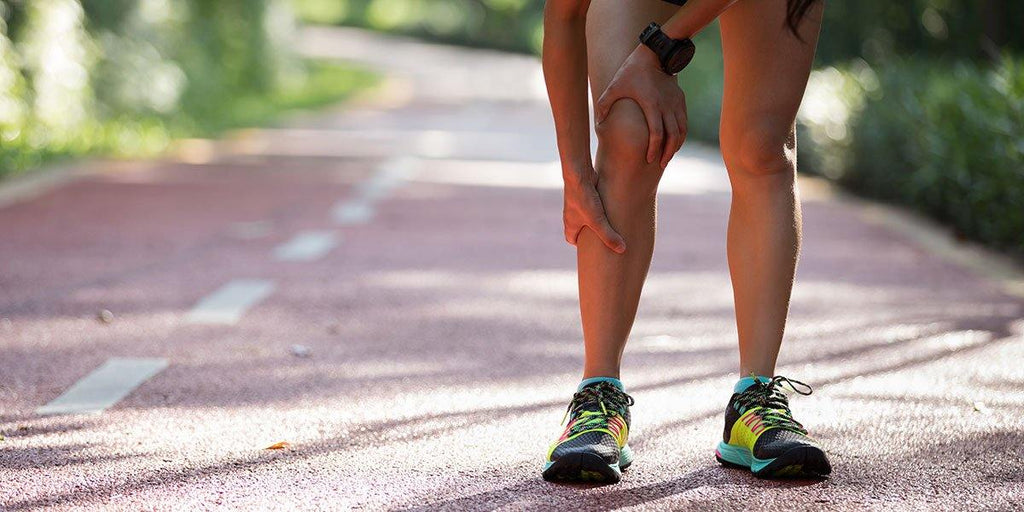
Shin Splints: Causes, Treatment, and Prevention
Shin splints are one of the most common injuries reported among runners, and by some estimates, 30 – 40% of beginners will experience shin pain at some point during their training. Understanding shin splints is important for preventing this injury, and everything a beginning (or veteran) runner needs to know for diagnosis and treatment is discussed below.
Causes of Shin Splints
Despite the prevalence of lower leg pain among runners, the exact cause of medial tibial stress syndrome (MTSS, the technical name for shin splints) is not entirely understood. Some sports doctors believe calf tightness is to blame, while others assert that fascial restrictions in the periosteum (the muscle that wraps around the shin bone) is the root cause. Shin splints may also be triggered by muscle imbalances, such as weak hips or a weak posterior tibial tendon.
What causes these physiological changes that result in shin pain? The most common reason is that a runner has run too many miles (or added too much intensity) too soon. Often, shin splints are common among new runners who become overeager in their training, or veteran runners who are returning from an injury or extended break. Other common reasons for the development of lower shin pain are running in shoes that are either worn out or the improper fit or doing too many runs on hard surfaces, such as indoor tracks and concrete.
Diagnosing Shin Splints
Determining whether you have shin splints is relatively easy. The best way is to stand barefoot on a hardwood or non-carpeted floor with feet firmly planted below your hips. For the leg that hurts, raise your toes off the ground with your weight resting on your heels. If this movement causes pain on the inside of your shin, then MTSS is likely to blame. However, if no pain is felt during this exercise, you may instead be dealing with a stress fracture in the tibia, which can cause similar pain to shin splints. In this case, you should see a sports doctor for a proper diagnosis.
Treating Shin Splints
The quickest way to alleviate shin splints is to take time off from running in order to allow your body to fully heal. If time off is not an option, compression gear, such as compression socks or calf sleeves, can alleviate shin pain during exercise by drawing blood flow to the affected areas for healing. Calf stretching and strengthening can also help treat shin splints, as can icing the inflamed area after exercise.
Preventing Shin Splints
Shin splints prevention is dependent on the root cause of the shin problems. For many athletes, this means practicing patience when building mileage. For instance, the 10% rule should be followed, meaning not to increase a week’s mileage by more than 10% of what was run in the previous week. Calf and shin exercises, such as calf raises, should also be incorporated into a runner’s daily routine. Finally, tracking mileage on (properly fitting) running shoes and ensuring never to wear them beyond their usable lifetime can also keep shin splints at bay.

Know Your Sweat Rate
One of the most important components of racing and training is staying properly hydrated. In fact, being just 2% dehydrated can lead to impaired performance. Understanding the amount that you sweat and the volume of fluids need to be consumed during training and racing can lead to drastic improvements in running performance. Knowing your sweat rate is the first step towards improved performance on race day.
What is Sweat Rate?
Sweat rate refers to the amount of sweat that is lost during an hour of vigorous exercise. It is dependent on the level of fitness, weather conditions, and exercise effort. As athletes become more fit, their bodies work more efficiently, meaning that they produce more sweat.
Why is Sweat Rate Important?
Knowing your sweat rate is important for two reasons: one, to know how much water or sports drink to consume after exercise, and two, to know how much water or sports drink to consume during long races. By taking in the proper amount of fluids the effects of dehydration, such as impaired performance and muscle cramps, can be mitigated. In addition, optimal hydration primes muscles for improved post-race or post-workout recovery.
Calculating Sweat Rate
To determine sweat rate you should first weigh yourself immediately before a run wearing as few articles of clothing as possible. Next, weigh yourself immediately following your run, being sure to remove any sweat-soaked clothing. Subtract your post-run weight from your pre-run weight. Now, multiply that number by 16 in order to convert lbs to ounces. Next, correct for any gels or drinks that were consumed during the run. For instance, if you drank 8 ounces of water, add that value to the difference between your pre- and post-run value. Next, divide the total number of ounces lost by the number of minutes that you ran. Finally, multiply that value by 60 in order to know your sweat rate in units of ounces per hour.
How to Use Sweat Rate
Now that you know your sweat rate, you can use this information to fuel your long runs and races. For instance, if you find that you sweat 30 ounces per hour, you should aim to take in 20 – 25 ounces per hour during your next half or full marathon in order to maintain optimal hydration. Be sure to calculate sweat rate throughout your training, and also try to mimic race day weather conditions as closely as possible.
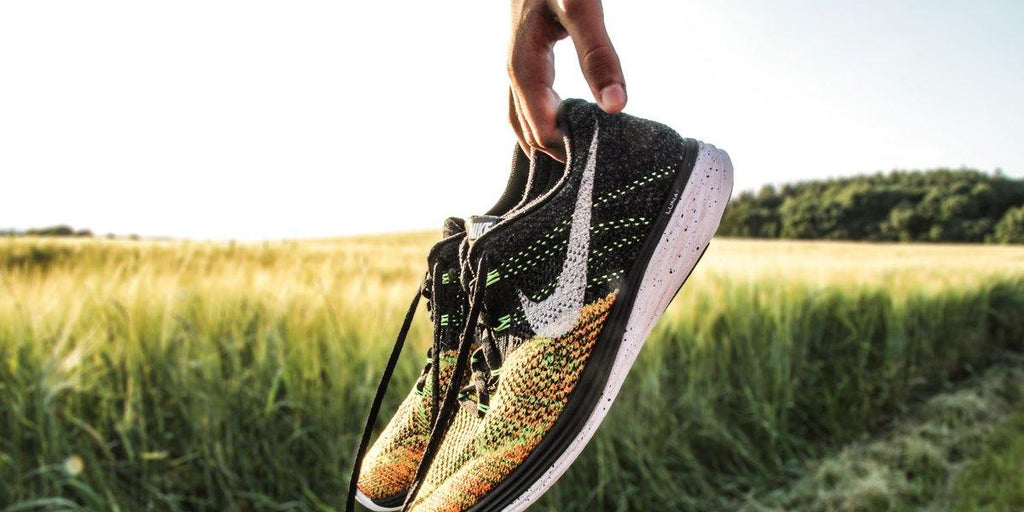
How (and How Not) to Pick Out Running Shoes
Running shoes are the most important investment that a runner can make to ensure comfortable, pain-free workouts. With the sheer variety of available styles, how should a runner choose the shoes that are most appropriate?
A Good Fit
When picking out running shoes, be sure to try on a variety of sizes as some brands tend to run small, while other brands can run large. In addition, the shoe should be a half to full size larger than dress shoes, and you should take into consideration that your feet will swell during runs. Don’t be afraid to ask if you can take the shoes for a quick jog inside or outside of the running store to ensure the heel doesn’t slip and that the toe box is the proper size.
Right for your Gait
If you have a neutral gait, meaning that you land with your weight evenly distributed on your foot, then any neutral shoe may be right for you. However, if you pronate (land on the inside of your foot) or supinate (land on the outside of your foot) then a stability shoe is your best bet for injury prevention. Ask the staff at your local running store to analyze your stride and suggest the best shoe for your feet.
Rated for Terrain of Choice
If you primarily run on the roads, a trail shoe may not be right for you, and vice versa. If you spend the majority of your time running on a specific type of terrain, you should look for a shoe that accommodates your preferences.
Color/Style
How should you not pick a shoe? When walking into a running store, leave all of your color and style preferences at the door. Choosing a shoe based on your favorite color or new trendy style, instead of fit, is one of the quickest ways to develop an injury.
Price
Runners are very particular about their favorite running shoes and are willing to pay a premium when they find the right fit. If possible, avoid choosing your shoe based on the cheapest price. If you are unable to afford the newest model in the best fitting shoe, look online or at an outlet store for your shoe of choice. Spending more money on the right shoe will save you valuable time – and money – in the long run if you become injured due to poor fit.

Essential Nutrients for Runners
Due to the high amounts of stress and strain that runners put on their bodies, their nutritional needs vary from that of the average individual. There are a number of vitamins and minerals that runners should incorporate into their daily diets in order to improve recovery, strengthen the immune system, and promote muscle and bone strength.
Vitamin D
It is not uncommon for an endurance athlete to complain of low motivation, fatigue, and muscle soreness. After all, high volume training is the main culprit of feeling tired and sore. However, what many runners do not know is that Vitamin D deficiency may be to blame, especially during colder months. This vitamin, which is found in dairy, eggs, mushrooms, and fish, is necessary in order to sustain muscle and bone health, as well as optimal oxygen uptake.
Vitamin E
An often overlooked nutrient, Vitamin E is essential for muscle repair and recovery. Found in squash, nuts, fish, oils, seeds, and avocado, runners who avoid fatty foods are often deficient for this important antioxidant.
Iron
Without a doubt, iron is one of the most common nutrients that runners find themselves lacking. Low iron levels affect fatigue, motivation, muscle recovery, and endurance. Foods that are high in iron include red meat, shellfish, dark leafy greens, and beans.
Magnesium
Magnesium is especially important for endurance athletes because it aids in muscle contractions and metabolism. When athletes are deficient in this mineral they have decreased endurance and decreased aerobic capacity. Magnesium is from the body lost via sweat, so drinking an electrolyte sports drink immediately after a hot run and eating dark leafy greens, seeds, nuts, fish, dark chocolate, or bananas is recommended.
Calcium
Calcium is crucial for strong bones, so it should be no surprise that runners need more of this essential nutrient in order to keep stress fractures and stress reactions at bay. Dairy (and dairy substitutes), yogurt, fish, beans, greens, and some melons are all great sources of calcium.
Zinc
Running can weaken the immune system, which leaves the body susceptible to injury and illness. Zinc is a necessary nutrient that can provide immune system support, especially when logging high mileage. In addition, zinc is a cofactor for many processes in the body, which means not having enough of this mineral can lead to many improperly functioning systems in the body. Foods that naturally contain high levels of zinc include shellfish, liver, wheat germ, and black-eyed peas.

Why I Run
People run for many reasons, whether it’s to get exercise, for the competition, or to relieve stress. We asked a few Tiux Ambassadors, “Why do you run?”
Here’s how they responded.
"Running brings me so much joy all around which motivates me intrinsically. It’s my quiet time but then again when running as a group it’s my social time too! I love the feeling of just running for fun just as much as I love following a training plan and pushing myself in a race. I have lots of running goals! The benefits are limitless and the goals can vary from one month to the next sometimes but bottom line – it’s my happy place, my reset, my confidant and my friend. I’d be lost without it! As a Girls on the Run coach I hope to inspire and motivate others too!" - Christine Piscitella
"Running has become a part of my lifestyle and I can’t imagine who I’d be without it. I love the Me that running has created! One of my biggest motivators are my running friends. We are definitely better together!" - Heather Lee Callaghan
"My mom was my biggest motivation to run, that is how I started. Once I did though I fell in love with it. It became a way to connect with people with similar interests, and be part of a wonderful community. It keeps me fit, relaxes me and is an escape from my day to day stressors and that’s what motivates me now to get out there." - Hufsa Mushtaq
"I run to inspire my community. I think representations matter and I didn’t grow up a runner so just having young girls of color see me as a role model gets me going out the door. It’s the same as when I notice disabled athletes running the races that I do. It shows me that everyone can do it in their own way. It also allows me to have at least a singular thing in common with others. So I run mostly for comradery. A mile is a mile, no matter how you do it." - Jerlyn Thomas
"For me, running is not just a hobby or a way to stay in shape, it is part of me. It helps relieve stress and brings so much joy to my life. I run for the beautiful scenery, the amazing friendships and to inspire my children. I run ultra distances to push my limits and go beyond my comfort zone. I truly believe that it’s in darkest of places where we are truly challenged that we grow and learn just how tough we are." - Michelle Corbett
"There are so many motivating reasons to run for me! It’s my time to quietly connect to myself if I run alone, to connect with friends and other runners, to connect with nature & the beauty all around me. I love signing up for a race and having that be my reason to get out and increase my mileage or challenge myself with a tough terrain! Oh, and it doesn’t hurt that I also have a sweet tooth!" - Laura Swenson
"I run because it connects me to myself and my community. Running is my meditation AND my social time. It also humbles me more than any other sport I’ve ever participated in and that feeling of reaching for goals and working hard is worth it every single time." - Lindsay McClelland
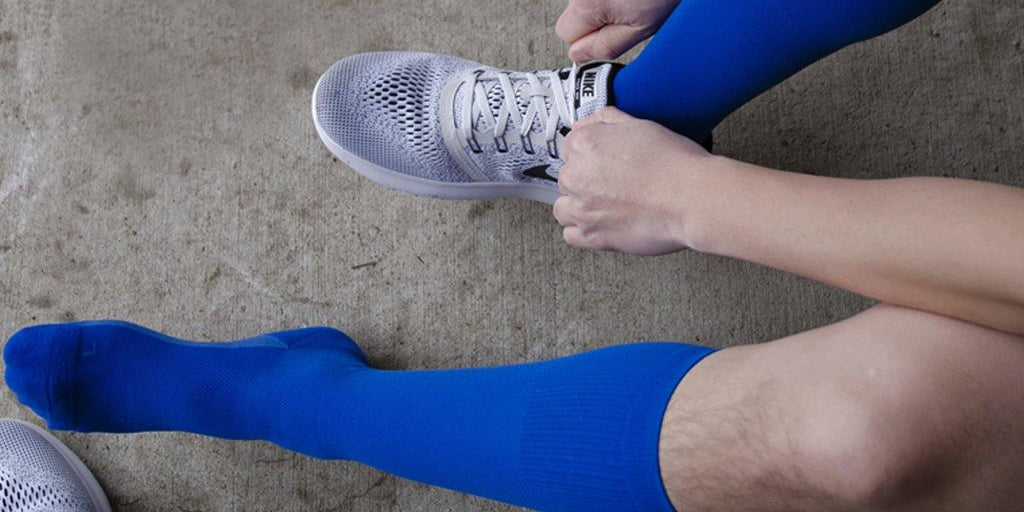
Running Compression Socks: Fad or Essential?
What are compression socks for and is it time for you to get a pair? Learn all about the benefits of using compression socks and how it can beef up your everyday and competitive running gear.
When you start taking running seriously, it’s going to be hard not to come across compression socks. It’s mentioned a lot in running tips and you might notice your fellow runners using them. During races, it’s not unusual to see most participants sporting this type of gear.
If you ask top athletes, they’re most likely going to tell you that compression socks or sleeves have taken their running game to a whole new level. Countless runners have reported that by using compression socks, they get injured less often, they recover much quicker, and their performance has reached new heights.
But are running compression socks really worth all that hype? Is there actual research that can back up what these runners are saying? That’s what you’re going to find out in this post.
How do compression socks differ from ordinary socks?
Compression socks look a lot like normal knee-high socks. On the other hand, compression sleeves start at the ankle and end just below the knee. Both, however, are a bit snugger than ordinary socks because they are intended to compress your legs.
How can I benefit from wearing compression socks for running?
Optimizes the oxygen cycle
Make no mistake: compression socks for runners are not just socks that are a little too tight. They’re a bit more sophisticated than that. They provide graduated compression, which means that they’re looser towards the knee and tighter towards the ankle. Why were they designed this way?
This graduated compression helps combat the effects of gravity in your legs. As an effect, your blood gets funneled back to your heart much quicker. The tightness creates a specific pressure that basically squeezes up your leg fluid with every step. Because the oxygen cycle is hastened, you get more nutrients to the muscle group that needs it the most as you run.
Reduces muscle soreness
The culprit of muscle soreness is lactic acid. Your body could produce more amounts of this waste product when you overwork your muscles. Because of poor or unaided blood circulation, you increase your chances of building up lactic acid in your leg muscles, which is why you feel like you can barely stand the day after a long running session.
As mentioned above, compression socks constrict your veins. Now, think of a pipe with water running through it. What would happen if you make that pipe narrower? The velocity of the water increases. The very same principle can be applied to your veins.
When your veins are constricted, the faster the oxygenated blood and lactic acid leaves your legs and makes their way to your heart. When these elements don’t linger in your legs for too long, you’re not going to get as sore after you run.
Decreases swelling and cramping
When your leg muscles are tightly contained, you minimize excess movement in them. What does this mean for a runner? Running takes considerable effort. When you wear compression socks, you’re not going to have to exert as much effort and you won’t have to tire your legs out more than necessary. This means that you’re not going to be using as much muscle, which greatly eases the feeling of fatigue. A lot of athletes swear that compression socks help them go on longer runs because they don’t tire out as easily.
Swelling is another thing that runners are very familiar with. If you run regularly, your feet, ankles, and legs could get swollen because of fluid buildup. Compression socks essentially minimizes the room for this excess liquid, which causes the swelling.
Are there studies that prove the efficacy of compression socks for runners?
Yes, there are studies that show how athletes who wear compression socks for 48 hours after running a marathon recovered much quicker than those who didn't. Another study indicates that in fact, wearing compression socks has positive effects on blood flow and volume.
How to choose compression socks. What size should I get?
People who haven’t tried compression socks are mostly worried about sizing, which makes sense. You don’t want to wear socks that are too tight because it might cause bruising. Before you shop for your first pair, make sure you get your tape measure out and measure your calves and ankles to find the right fit.
Will I be a better runner if I wear running compression socks?
Pulling on a pair of running compression socks isn’t automatically going to make you a better runner. However, having them handy will help you recover from a particularly difficult run and power through the last leg of a long race. At the end of the day, compression socks are a great running accessory. You will still need to practice healthy running habits and consult with a medical professional to deal with recurring leg pain.
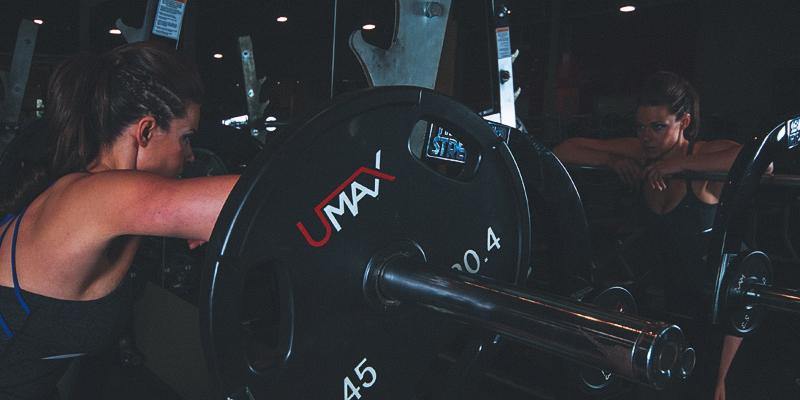
Benefits of Strength Training for Runners
For many people, running and strength training are two activities that seem to be at odds with one another. On the one hand, running is a solitary activity where the participants draw little attention to themselves and their short shorts. On the other hand, weight lifting can be an intimidating endeavor for the uninitiated, one where a runner’s physique is often considered a disadvantage. There are many reasons runners should get themselves into the weight room, which are discussed below.
Fewer Injuries
Many injuries occur because of muscular weaknesses and imbalances. For instance, runner’s knee is common among athletes who have an imbalance between their hamstring and quadriceps muscles. A contributing factor to shin splints appears to be calf weakness. In addition, many common running injuries can be attributed to weak hips. Fixing these problem areas in the weight room has been shown to prevent common overuse injuries from occurring.
Increased Metabolism
The body burns more energy maintaining muscle than it does trying to hold onto fat. Therefore, incorporating strength work into your weekly routine will not only prevent injury and make you a stronger runner, but will increase your chances to lose stubborn body fat, as well.
Muscle Memory
When lifting weights, a runner’s muscles experience a level of fatigue that can only be replicated by a hard or long run. Muscles can be conditioned to this feeling and a runner can learn how to push past physical exhaustion by lifting for endurance with low weights and high repetition.
Increased Power
Weight lifting helps athletes develop explosive strength, especially for runners who do not have highly developed fast twitch muscle fibers. Strength training will also help runners fatigue these muscles less easily, leading to an improved kick at the end of a race.
Better Form
Inefficiencies in form ultimately cost a runner time, especially in long distances. Working in the weight room helps improve form by strengthening hips and core for better posture, improving knee drive, and strengthening upper body for a more powerful arm swing. Each of these factors ultimately leads to better running economy for faster finishes.
Reduced Inflammation
Despite the muscle soreness that you may experience following a heavy lifting session, strength training can actually reduce the oxidative stress and inflammation that runners experience on a daily basis. By working muscles in a different way (e.g., avoiding the repetitive movements of distance running), antioxidant benefits are achieved.

Recognizing Irrational Thoughts in Training
Many runners are Type A personalities who struggle with seeking perfectionism within a sport that is difficult to control. For serious runners, depression and anxiety can play a significant role, especially when factors outside of their control such as bad weather, injury, or a poor race performance. In some instances, these setbacks can lead to a downward mental and emotional spiral, marred by irrational thinking. Recognizing these irrational thoughts and replacing them with rational ones is crucial for the mental well being of the athlete.
Training
The mental aspect of training is just as important as the physical side, but is often overlooked. However, the way that training is approached from an irrational and rational perspective can have many implications on how a runner performs. A common occurrence is to experience a bad workout and allow the incident to spiral into thoughts of being slow, out of shape, overweight, or washed up. When a runner lets these thoughts consume him or her, decreased confidence and even self-fulfilling prophecies of poor race performance is the result. Instead of immediately resorting to these irrational thoughts, a runner should approach workouts as rationally as possible, realizing that they simply provide the runner with data. For instance, instead of assuming a bad workout is a sign of impending doom, factors such as diet, sleep, stress, and training fatigue should be analyzed before jumping to conclusions.
Racing
Runners can succumb to irrational thoughts as a result of races, such as in the days leading up to a big race. Often, runners convince themselves they no longer want to compete, despite months or even years of training. Worrying about performance, comparing themselves to others, feeling pressure to succeed, and being concerned about embarrassment or letting others down are all common irrationalities. Instead, runners should remind themselves why they enjoy racing, and look at the big picture—including the fact that running performance is not equivalent to personal worth. A second important factor is to only worry about controlling the controllables, meaning to ignore uncontrollable aspects, such as race weather, opponents, or external pressure.
Recovery
Runners are notoriously bad at recovery because they are not good at taking time off. Instead of irrationally believing that fitness will be lost when taking time to heal, runners should realize that recovery is one of the most important components of training and that fitness gains cannot be made if the body is not given time to properly rest.

Finding Motivation to Run
Often, the hardest part of running is taking the first few steps out the door. In fact, sports psychologists have discussed the psychology of motivation at length, citing that motivation can be difficult because running is an energy-intensive exercise, historically reserved for evading danger or finding food. How can you find motivation to get out the door? Tried and true methods are discussed below.
Remind Yourself Why
Runners tend to fall into a trap of feeling as though they have to run every day, which can cause them to lose motivation. One way to avoid these feelings is to remind yourself daily why you run. Is it because you love it? Because you have a goal you want to reach? Or, perhaps it is because you simply feel great and more energized afterwards. Whatever your reason is, reminding yourself why you run can help improve your motivation.
Write Down Your Goals
If reminding yourself why you run is difficult, write down your goals and display them prominently in the house, such as on the bathroom mirror or on the refrigerator. In this way, you are continually reminded of your aspirations, which will make it more difficult to intentionally avoid working towards them.
Set Up a Reward System
When motivation is low, set up a system for which to reward yourself for completing your daily workout. One example is to assign a monetary value to each mile that you plan to run. This approach is especially useful on long run days when the motivation to start the run is limited. For instance, each mile can be worth $0.25. At the end of your run, add up how much money you banked, and then treat yourself to a reward, such as a special coffee. Another way is to set a goal for the week or month, such as accomplishing a certain number of runs for the week or a monthly mileage. If you reach your goal, give yourself a predetermined reward, such as an indulgence or a new pair of running socks.
Enlist a Training Partner
When all else fails, finding a running partner can drastically improve motivation. Look for someone who has similar goals and schedule as your own. If you are unable to find a running partner, look for running crews in your neighborhood to keep you motivated. Knowing that someone is counting on you to show up is a great boost to ensure you complete your workout!
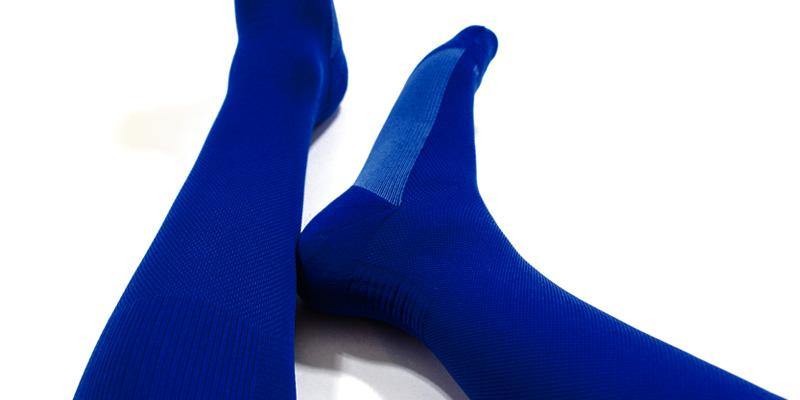
How Do Compression Socks Work?
By now, most people know that compression socks are beneficial for a number of reasons, such as improved blood flow to constricted areas and reduced swelling. But how do they work? Compression technology and the way these highly engineered socks function to provide comfort and utility are described below.
Human Circulatory System
In order to understand how compression socks work, it is first important to have a general understanding of how the circulatory system functions (i.e., the system responsible for transporting blood throughout the body). Blood is pumped through the body via arteries, thanks to the constant pumping of our heart. Oxygen within the blood is transported to muscles and organs, where cells use this vital element to carry out processes to sustain everyday life, such as muscle contractions or energy consumption. The waste products from these processes, as well as the deoxygenated blood, are then transported back to the heart via veins for re-oxygenation.
Compression Technology
Compression socks have what is referred to as graduated compression. Here, the sock is tighter and has more compression towards the lower leg, and gradually loosens towards the knee. The purpose of this design is to work against gravity by increasing delivery of deoxygenated blood to the heart, instead of allowing the waste products and inflammation to pool in the lower legs.
Arterial Blood Flow
When compression is consistently applied to the legs, artery walls dilate, which increases the flow of blood from the heart. Therefore, deoxygenated blood can be removed from muscles more quickly, allowing oxygenated blood to take its place.
Muscle Soreness and Recovery
The accumulation of metabolic waste products in the lower legs is the leading cause of muscle soreness. During recovery, compression socks help improve arterial blood flow, which decreases the amount of deoxygenated blood in the lower legs, to speed up your recovery time.
Athletic Performance
When wearing socks for athletic performance, such as during marathons, the improved flow of arterial blood is important for reducing muscle cramps. Wearing compression socks during any endurance activity will reduce lactic acid build up and ensuring proper blood flow at all times.
Blood Clot Prevention
The pooling of blood in the lower legs is a risk factor for developing deep vein thrombosis and a pulmonary embolism. The graduated compression of these socks helps prevent blood clots from occurring by improving circulation throughout the body.

Tips for Developing a Race Strategy
Photo by Heather Lee-Callaghan.
Have you ever stood on the starting line and had a competitor ask you about your race plan, only to realize that you had not given it a thought? Developing a race strategy not only provides peace of mind and confidence on race day, but can help you achieve your goals when executed properly. Below are tips for helping you develop the best plan for your needs.
Training Mentality
Would you ever go into a training run “hoping,” or “wishing,” to hit a certain pace? If you are like most runners, you approach training knowing what times you are capable of running, without giving them a second thought. You should approach race day in the same manner. Instead of saying, “I hope I can run 7:00 pace for the first 10 miles,” say, “I will run 7:00 pace for the first 10 miles.” The first step of developing a good race strategy is believing in your abilities.
Know the Course
When developing a race plan, it is important to understand the course. If the race is a marathon and there are hills in the final 6 miles, you will want to conserve energy during the middle portion of the race. If the first mile of a 5k is downhill, you will want to make sure not to run too fast when the gun goes off. If the course is flat, aiming for even or negative splits is recommended. You should also know as much about the course as possible so that you don’t have any surprises on race day.
Power of Negative Splits
When aiming for a goal time, many runners mistakenly believe that “banking” time by running the first half much faster than goal pace will ultimately help them reach their goals. Instead, running even or negative splits (meaning the second half is run at the same pace or faster than the first half) is recommended. Develop a plan where you approach the first half of the race conservatively and slightly slower than goal pace. Not confident in this approach? Try this method during a training or long run to test how it feels.
Fueling
If your race lasts more than 75 minutes, fueling should be part of your race plan. Before the gun goes off, be sure to have a detailed plan for when and where you take in carbohydrates and how much you need to drink at each aid station.
